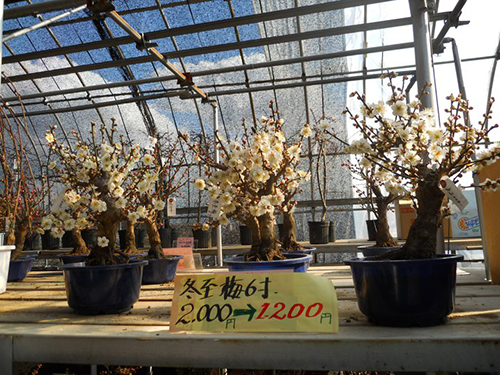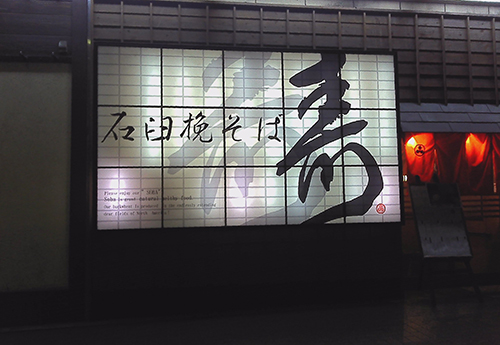41. The "Inch" Radical: 寸
The "inch" radical 寸 doubles as this Joyo kanji:
寸 (909: brief, small; old unit of length; measurement)
Its only Joyo reading, the on-yomi スン, inspired the names of the radical:
すん
すんづくり
The second option ends with a voiced version of -つくり, the position name for a radical on the right side of a kanji. (To understand this, see Radical Terms and check the "Radical Positions" section, reading about position 2.)
So すんづくり applies to the 寸 radical in these Joyo kanji:
対 (336: to, for; opposing; contrast; in relation to; to deal with, receive; pair)
射 (882: to shoot; emit, radiate; archery; shine on)
尉 (1004: military officer)
封 (1762: seal; to enclose; make someone landlord of a territory)
Meanwhile, just すん works in the case of these Joyo characters, plus the 寸 kanji itself:
寺 (133: Buddhist temple)
導 (759: to guide, lead, teach, conduct, transmit)
将 (899: religious sect; religion; head of a clan)
専 (914: exclusive; specialized)
尊 (927: honor)
寿 (1351: congratulations; longevity; lifespan; ス sound)
尋 (1451: to investigate, search; unit of length)
Someone should have concocted a name for 寸 when it sits at the bottom!
In all, 12 Joyo kanji feature this on-duty radical, which has three strokes and no variants.
Photo Credit: Kevin Hamilton
The diagonal 肴 (さかな: accompaniment for drinks) at the top of this lantern is non-Joyo. Below that character and to the right, 寸 appears in this word:
一寸一ぱい (ちょっといっぱい: have a glass or cup of saké for a moment)
In 一寸 (ちょっと), which translates as "small" in this context, the 寸 means "inch." The ちょっと yomi is ateji. As for いっぱい, that corresponds to 一杯, meaning "one drink," usually an alcoholic one.
The other column contains お氣軽に (おきがるに: lightheartedly), though the に is very hard to see. The 氣 is the old, non-Joyo version of 気.
What Is a Japanese Inch?
The 一寸 on the lantern breaks down as 1 + inch. Indeed, I've indicated that 寸 can mean "old unit of length." More precisely, that unit is a Japanese inch, which is roughly 3.03 centimeters and is known as 1 sun.
Henshall says in his newer edition that an early version of 寸 depicted a "hand" and "1 sun." A horizontal stroke across the bottom symbolized the latter part.
According to Kanjigen, 1 sun represented the width of one finger. Although 寸 has been a unit of length in both China and Japan, the precise length has differed in each context.

Photo Credit: Yoshikazu Kunugi
In Kofu City, which is in Yamanashi Prefecture on Honshu, a place called 不老園 (ふろうえん: Garden of Perennial Youth) sells ume (Japanese apricot) trees cut into bonsai shapes. The sign indicates that we’re seeing a 冬至梅 (とうじばい or とうじうめ: winter solstice ume) that will grow to 6寸 (ろくすん: about 20 centimeters). This type of ume blooms around the winter solstice (冬至)—hence the name.
What Does 寸 Mean in Certain Kanji?
Aside from the 寸 kanji, not one of the Joyo kanji featuring the on-duty 寸 radical represents anything as tiny as an inch. In fact, 寺 symbolizes a whole temple! So what exactly does 寸 mean in these characters? Let's check out a few etymologies, all from Henshall's newer edition:
寺 (133: Buddhist temple)
One scholar views the character as combining 寸 (originally "hand") with 止 ("stop"). The latter component phonetically expresses "control," so 寺 initially meant "control with hand." Only later did it come to mean "place to control/administer" and from there "Buddhist temple." Ah, a temple was the seat of power!
導 (759: to guide, lead, teach, conduct, transmit)
Our radical here means "hand/measure," and the 道 ("road, way") phonetically conveys "walk." The overall sense, then, is "walk while guiding someone by the hand," which generalized to "guide, lead." Very cool!
射 (882: to shoot; emit, radiate; archery; shine on)
Early forms show an "arrow positioned in a bow, ready for shooting." Our radical, representing a "hand," helped the character mean "shoot an arrow."
専 (914: exclusive; specialized)
This character started out with a different "hand" radical, 又, which later changed to 寸 ("hand; measure"). The rest of the character symbolized "spool, bobbin, top for spinning." Several scholars take ancient versions of 専 as "child holding a spool-shaped toy in the hand." That produced "keep (something) for oneself, monopolize" as extended senses of the character.
The 寸 means "hand" each time.
Photo Credit: Eve Kushner
Just as 寸 appears in 寿 (1351: congratulations; longevity; lifespan; ス sound), our radical is visible in the variant, non-Joyo form 壽. In Chinese, that's the Traditional form of this character.
Of all places, I took this photo at San Francisco International Airport, where the Asian Art Museum of San Francisco had a 2010 exhibition called "Hidden Meanings: Symbolism in Chinese Art and Culture."

Photo Credit: Lutlam
Our radical becomes unrecognizable in calligraphic renderings of 寿, such as this one on the window of a Tokyo soba restaurant. Read as ことぶき (longevity), that kanji represents the restaurant name. It would be easy to mistake this for a sushi place because 寿司 (すし) means "sushi," but soba is the specialty here. The 石臼挽 (いしうすびき: ground with a stone mill) indicates that the soba is made from ground buckwheat. The 挽 (to grind) is non-Joyo.
